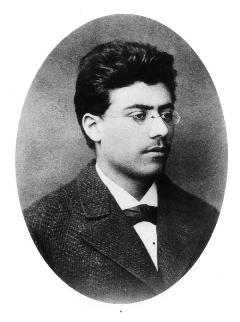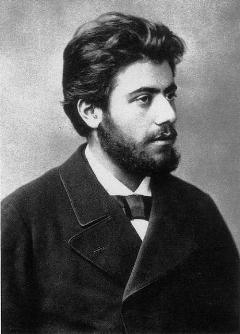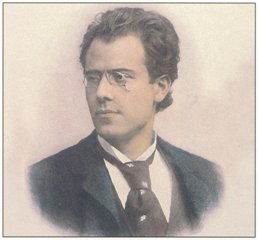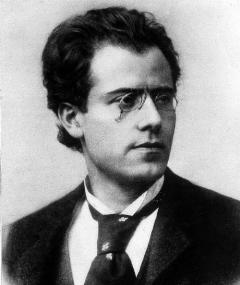Gustav Mahler - Symphony No.1 'Titan'
Gustav Mahler - Symphony No.1 'Titan'
Many people think Mahler just didn’t know when to stop composing something. Almost everything he writes is over an hour long! Some people think there are two many ideas and for those who think that, his First Symphony is one to enjoy. This symphony is one of his only major works under an hour long (under most conductors). It is a great starting point for anyone interested in Mahler!
Gustav Mahler - Symphony No.1 ‘Titan’
Born in 1860, in Kalischt, Bohemia, Gustav Mahler came from a middle-class family. His tragic childhood stalked him for the whole of his life. Mahler frequently witnessed the brutality and abuse meted out on a long-suffering mother by an ambitious father. When he was six, Mahler discovered a piano in the attic of his grandmother’s house. Four years later he gave his first solo piano recital and aged 15 he enrolled at the Vienna Conservatoire. Here he not only developed as a pianist but won prizes for his compositions and discovered a talent for conducting.

Gustav Mahler, 1865
His professors noticed already the diligence and single-minded application that marked his professional career. Within a short space of time, conducting and composition took over his entire life with a totality that left little time for anything else. Around 1880, he began conducting and wrote his first mature work, 'Das klagende Lied.'

Gustav Mahler
In 1882 he moved on to Olmütz and the next year to Vienna and Kassel – the traditional path of the aspiring conductor, moving from opera house to opera house, slowly building a reputation. In 1885 he was in Prague, then got a break in Leipzig working in harness with another brilliant young conductor, Arthur Nikisch. In one season Mahler conducted over 200 performances.

Leipzig Opera House
His next step was to take over the Royal Opera House in Budapest from 1886 to 1888. Here he built up a fine company that won the praise of Brahms. He was usually either greatly respected or thoroughly despised by the performers for his exacting rehearsals and perfectionism.

Gustav Mahler
Gustav Mahler’s Symphony No. 1 in D Major, also known as the ‘Titan’ symphony, was primarily composed between the 20th January and the end of March 1888 in Leipzig, although the work also incorporates pre-existing musical themes and ideas from earlier Mahler compositions.

Gustav Mahler
In autumn 1888, he found an employment in Budapest where he completed the orchestration, and the following year Mahler himself - like almost with all his following works - conducted the first performance of that work as a "Symphonic Poem"; the audience and the critics took the music rather coolly and without any understanding.

Vigado Concert Music Hall, Budapest
As he always did with his following compositions too, Mahler already started during the rehearsals and performances to revise it. The title of the whole symphony also comes from a book by Jean Paul, the novel Titan. Mahler imagined a strong and heroic man, his life and grieves, his struggle and defeat against fate. Originally performed as a symphonic poem without programme, Mahler later on gave some written explanations, and it was in 1896 in Berlin that the composition had been performed for the first time as a programmatic Symphony No. 1.

Gustav Mahler
The published version of Mahler’s first symphony consists of a four movement symphonic structure:
I. Langsam. Schleppend (Slow, dragging) II. Kraftig Bewegt, Doch Nicht zu Schnell (With powerful movement, but not too fast) III. Feirerlich und Gemessen, Ohne zu Schleppen (Solemn and measured, without dragging) IV. Sturmisch Bewegt (With violent movement)

Gustav Mahler
The first movement, Langsam Schleppend (Slow and Dragging), opens with an introduction invoking nature, eventually with cuckoo calls and distant fanfares. The principal theme is from the song "Ging heut' morgens übers Feld" (I Went Out This Morning Through the Fields) and is developed in a standard sonata form. The second movement, Kräftig bewegt (Strongly moving), is a lusty and hearty Austrian Ländler replete with yodels and foot stomping. The slower and wistful Trio conjures feelings of nostalgia and longing. Based on a woodcut depicting animals carrying a hunter to his grave, the third-movement funeral march, Feierlich und gemessen (Solemnly and measured), is deeply ironic. Mahler uses the folk song "Frère Jacques" in a lugubrious minor, played by a muted double bass solo. The central Trio is an evocation of tawdry Viennese cabaret music.

Gustav Mahler
Mahler's original program for the Stürmisch bewegt (Stormy) finale called the movement's dramatic opening "the sudden outburst of a wounded heart." After a long and violent beginning invoking the torments of hell, including a vehement march derived from the first movement, the music subsides into a yearning theme. After a return to the march, Mahler interrupts the mood with a transformative fanfare that eventually leads to a triumphant conclusion.

Funeral Procession March
Mahler last conducted his own First Symphony on December 16 and 17, 1909, when he led the New York Philharmonic in the work's United States premiere. After his death in 1911, the score that he used in those performances remained in the Philharmonic Orchestra's Library and was stamped accordingly. It was used in later Philharmonic performances, and bears markings by Bruno Walter in 1933 and Leonard Bernstein in 1959 or 1962.

Gustav Mahler








